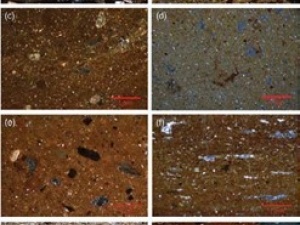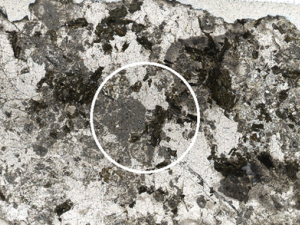Micro-Raman spectroscopy and complementary techniques (hXRF, VP-SEM-EDS, μ-FTIR and Py-GC/MS) applied to the study of beads from the Kongo Kingdom
Abstract
In the framework of the inter-disciplinary KongoKing project, a set of beads from archaeological excavations in the Democratic Republic of the Congo was analysed by means of a minimally invasive, multi-analytical approach based on micro-Raman spectroscopy. The full characterization of the materials, including glassy network, opacifiers and colorizers, was achieved thanks to the combination of data from handheld X-ray fluorescence, variable pressure scanning electron microscopy coupled with energy-dispersive X-ray spectrometry, micro-Fourier transform infrared spectroscopy and pyrolysis coupled to gas chromatography and mass spectrometry. The obtained chemical information was used to fill the existing gap in the chemical study of beads from Western Central Africa. The cobalt-rich blue beads were found to be of Central European origin, while the copper-rich turquoise beads were manufactured using distinct copper sources. Cadmium yellow and cadmium red are the colourants responsible for the bright colours of bead types 10 and 12, respectively. The type 12 beads were found to be composed of glass covered with a waxy layer tentatively identified as Japan wax. Prosser-moulded bead type 9 was coloured by means of a chrome–tin pigment, while a combination of Mn and Fe is responsible for the black colour of the type 47 beads. Cuprite is most likely responsible for the red hue of glass layers from type 14. The dark palm green exterior of the type 17 bead was produced by using a combination of Cu and Fe compounds; iron was the only chromophore detected in the Indian red decoration.
Full article:
Source: Preview Image: Imfoto/Shutterstock






